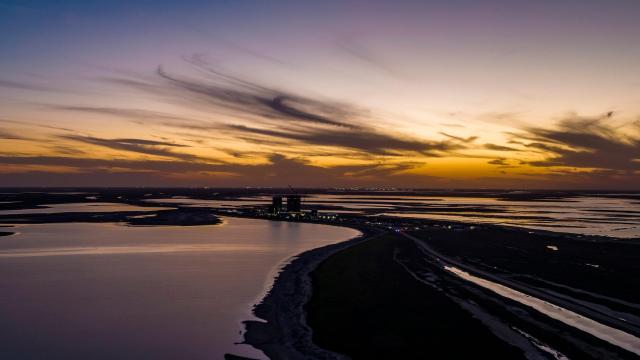On Monday, the Federal Aviation Administration (FAA) completed its environmental assessment of SpaceX’s proposed site expansion in Boca Chica, Texas, after months of delay.
The agency declared that SpaceX’s plans for its upcoming Super Heavy rocket would have “no significant impact” on people living in the area and thus could proceed without an in-depth Environmental Impact Statement — which would’ve otherwise have likely taken years to produce.
“The FAA has determined the Proposed Action would not significantly affect the quality of the human environment. Therefore, the preparation of an Environmental Impact Statement (EIS) is not required, and the FAA is issuing this Mitigated Finding of No Significant Impact (FONSI),” wrote the agency’s environmental protection specialist, Amy Hanson, in an introductory summary of the decision.
As part of its decision, the agency is requiring SpaceX to complete about 75 environmental mitigation actions in order to proceed with the site expansion and to perform launches of the fully stacked Starship rocket. Even with those 75 requirements though, the announcement is a boon for Elon Musk’s company. If the FAA had opted to require an EIS instead, the supporting research to complete that document could’ve taken years, and potentially sent the Texas-based project into an indefinite hiatus — or even sent Musk packing to Cape Canaveral in Florida.
In response to the announcement, SpaceX tweeted that the company is “one step closer to the first orbital flight test of Starship.” And while SpaceX execs are likely happy with the FAA’s decision to skip a complete EIS, not everyone is.
“We’re very disappointed,” said Jared Margolis, a senior attorney for the non-profit Centre for Biological Diversity who works on endangered species protections, in a phone call with Gizmodo. “I think it’s pretty clear when you’re doing this type of activity with giant rockets that tend to explode, that’s a pretty significant environmental impact that needs to be fully considered in an EIS.”
Margolis expressed additional disappointment that the FAA’s mitigation requirements “don’t have any teeth.” For instance, many of the requested mitigation actions include wildlife and environmental monitoring, but don’t specify how the future findings of that monitoring will be used. The agency is also not asking SpaceX to set aside or protect any migratory corridors for birds or endangered species like ocelots to help the animals to move away from the Boca Chica area. The FAA is “doing the minimum amount they can do to get away with what they are calling a ‘mitigated finding of no significant impact,’” said Margolis.
He further pointed out that Boca Chica is a uniquely important site for many species, and is a major stopover for migratory birds. The proposed site is surrounded by national wildlife refuges, where negative impacts from SpaceX have already been noted by FWS. For instance, large debris from rocket explosions caused hydrological changes in protected wetlands.
“As we look to the stars, we [shouldn’t] forget about the species here on this planet that are being impacted,” he added. “We need technological advancement…but [SpaceX’s] vision of the future can’t come at the expense of our planet.”
Some of the mitigation requirements the FAA did include for SpaceX are things like controlling and keeping tabs on its light pollution (which could endanger sea turtles nesting in the area). The company will also have to spray water to keep down dust and air pollution, and make small donations of $US5,000 ($6,941) to two environmental organisations. All of the mitigation actions are summarized in Table S-4 of the document.
Very importantly, the FAA announcement doesn’t mean SpaceX is set to start construction at Boca Chica right away, nor does it mean the private company can start launching Starships to orbit. The FAA still has to complete its review and issue permits surrounding safety. Plus, the FAA isn’t the only federal body involved in the site’s environmental approval, and the project has faced other regulatory complications. Because SpaceX plans to build onto 17 acres of sensitive terrain, including wetlands, the Clean Water Act dictates that the U.S. Army Corps of Engineers needs to rubber stamp the project as well.
In April, the Army Corps rejected SpaceX’s initial application for the site after Musk indicated the company could shift its Starship operations to Cape Canaveral and Kennedy Space Centre in Florida. To get that review process restarted, the company will have to resubmit a new application with more detail, particularly on the viability of the Cape Canaveral alternative.
The FAA’s own assessment took months longer than initially expected. The environmental review was originally scheduled for December 2021. There were six delays of the of the decision prior to its release today.
Separately in May, U.S. Fish and Wildlife reported that SpaceX activities were hurting and displacing threatened shorebirds, in a biological opinion. That document proposed its own environmental mitigation steps for protecting wildlife, but nonetheless determined that SpaceX’s impacts weren’t too harmful for the Starship project to go forward. That FWS opinion was part of what informed the FAA review, and many of those Fish and Wildlife recommendations are repeated in the FWS finding.
